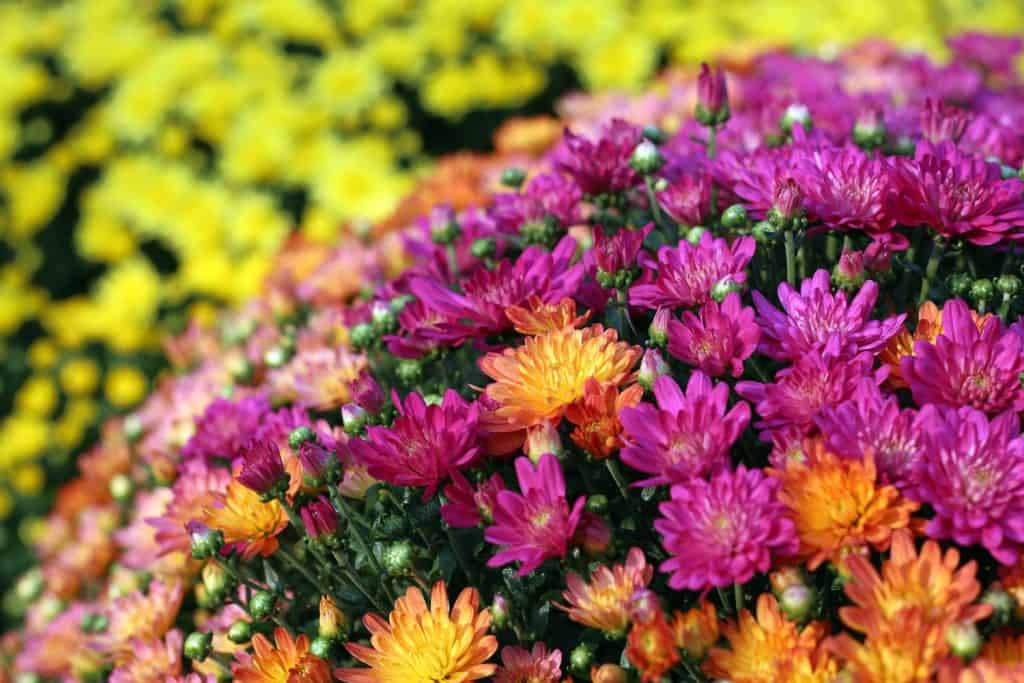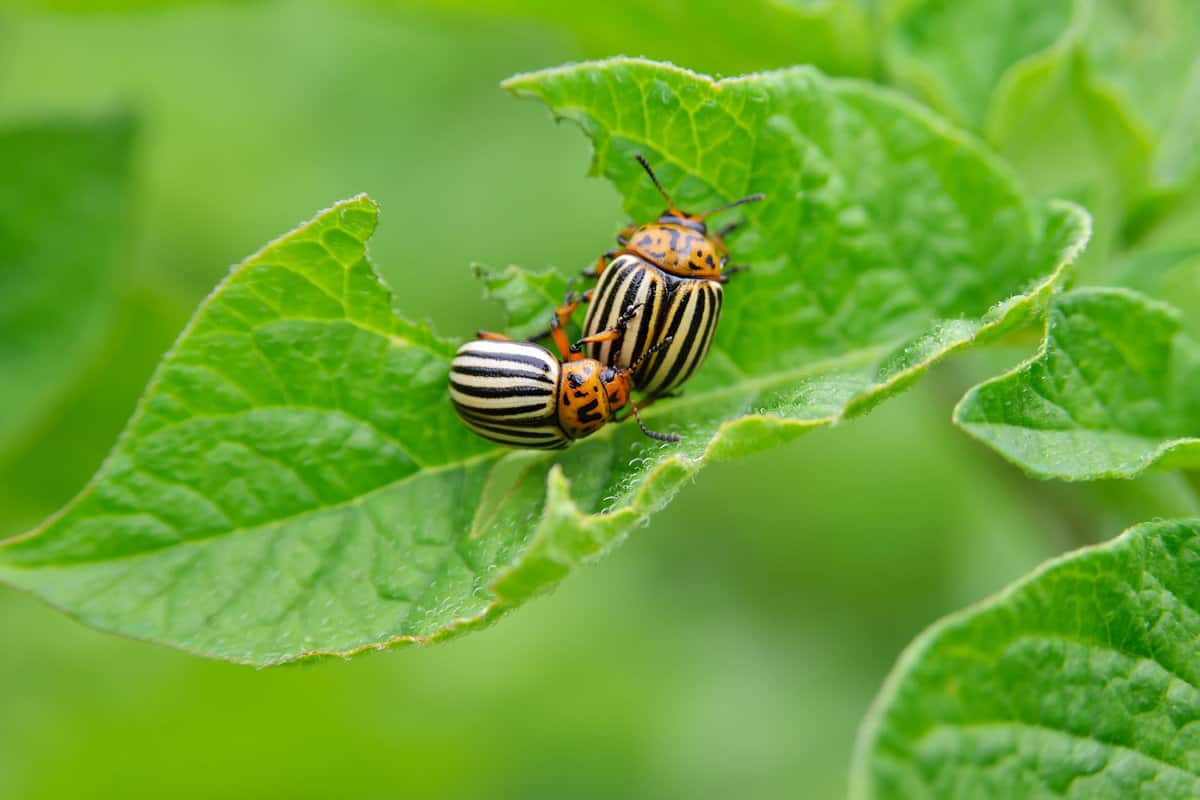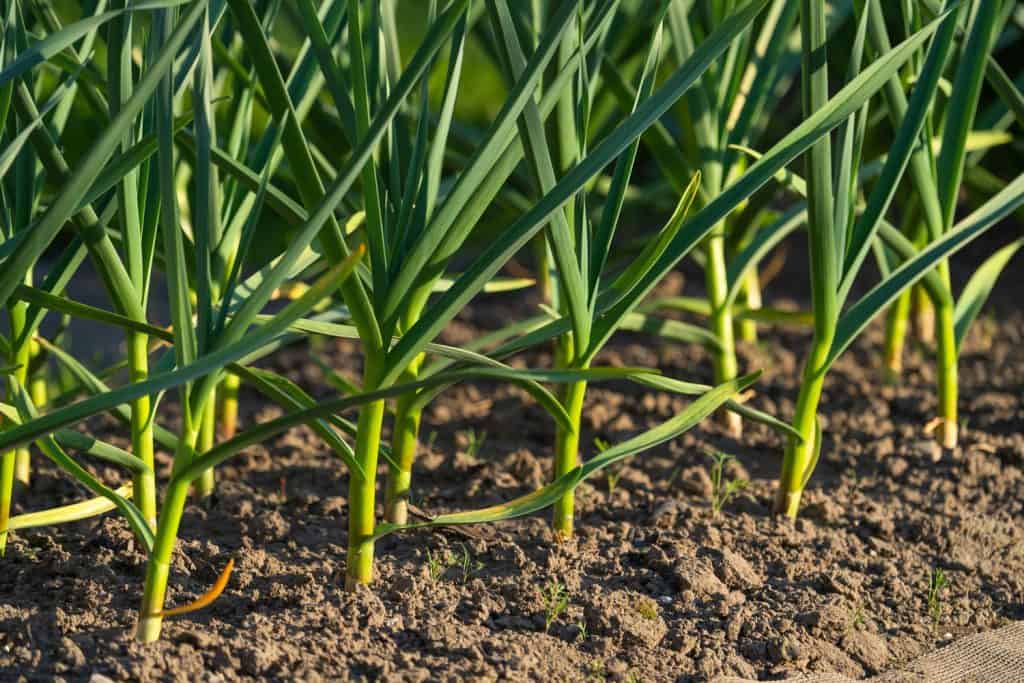Are you looking to add some color and life to your garden this season?
Look no further than companion planting with mums! These popular plants are beloved for their vibrant blooms and ease of care, making them a favorite of gardeners everywhere.
But did you know that pairing mums with the right companion plants can take your garden to the next level?

You can create a visually stunning landscape by selecting plants that complement your mum's color, texture, and height.
But companion planting isn't just about looks. It can also provide practical benefits, such as repelling pests and improving soil quality.
The possibilities are endless, with many options for companion planting with mums.
So, if you're ready to take your garden to the next level, keep reading to learn more about the benefits of companion planting with mums and some popular pairing options to try in your garden.
Companion Planting
Companion planting is the practice of growing different plants to benefit each other. When done correctly, companion planting can help improve soil health, control pests and diseases, and increase yields.
In this section, we will discuss the basics of companion planting and the benefits of planting mums with other plants.
Benefits of Companion Planting
Companion planting has been used for centuries and is based on the idea that certain plants can help each other grow better.

Here are some of the most significant benefits of companion planting:
- Pest control: Certain plants can repel pests or attract beneficial insects, which can help control pests and diseases.
- Improved soil health: Companion planting can help improve soil health by adding nutrients and organic matter.
- Increased yields: Companion planting can help increase profits by improving pollination and nutrient uptake.
- Space efficiency: Companion planting can help you use space efficiently in your garden by planting vegetables and flowers in mutually beneficial arrangements.
Related Post: 25 Fabulous Companion Plants for Roses
The Role of Mums in Companion Planting
Regarding companion planting, mums are a popular choice among gardeners.
These vibrant flowers not only add color to your garden but also have a positive impact on other plants.
Mums' Impact on Other Plants
In addition to their pest-repelling and pollinator-attracting properties, mums can positively impact other plants in your garden.
Here are some ways that mums can benefit their companion plants:
- Soil improvement: Mums have deep roots that help break up compacted soil and improve drainage. This can benefit other plants by creating a healthier growing environment.
- Shade tolerance: Mums are shade-tolerant plants, making them an excellent choice for planting under trees or in areas with limited sunlight.
- Aesthetic appeal: One of the main reasons to plant mums as companion plants is their aesthetic appeal. Mums come in various colors and sizes, which can help add visual interest to your garden and complement the colors and textures of other plants.
Related: Our 15 Favorite Ways To Show Off Gorgeous Mums This Fall
Best Companion Plants for Mums
Herbs and Mums
- Lavender: This herb has a beautiful scent and can attract bees and butterflies to your garden.
- Rosemary: Rosemary can repel pests like mosquitoes and flies and attract beneficial insects like bees and butterflies.
- Thyme: Thyme is a great herb to plant with mums because it can repel pests like whiteflies and spider mites.

Vegetables and Mums
- Garlic: Garlic can repel pests like aphids and spider mites and add nutrients to the soil.
- Onions: Onions can repel pests like carrot flies and aphids and add nutrients to the soil.
- Peppers: Peppers can repel pests like spider mites and aphids.

Flowers and Mums
- Asters: Asters can attract beneficial insects like bees and butterflies and add color to your garden.
- Black-eyed Susans: Black-eyed Susans can attract beneficial insects like bees and butterflies and add color to your garden.
- Salvia: Salvia can attract beneficial insects like bees and butterflies and repel pests like whiteflies and spider mites.

Related: Start Your Fall Garden Today: What to Plant Now
Common Mistakes in Companion Planting with Mums
When it comes to companion planting with mums, there are a few common mistakes that you should avoid to ensure that your plants thrive.
Here are some of the most common mistakes and how to avoid them:
Not Enough Spacing
One of the most common mistakes in companion planting with mums is insufficient spacing between plants.
Mums need space to grow and thrive, and if they are planted too close together, they may compete for resources like water and nutrients.
Follow the recommended spacing guidelines for your particular variety of mums.
Planting Incompatible Plants
Another mistake is planting incompatible plants as companions for mums. Some plants may harm mums or compete with them for resources.
For example, avoid planting mums with plants with shallow roots or requiring a lot of water, as these may compete with mums for water.

Also, avoid planting mums with plants known to attract pests or diseases.
Here are some examples of plants that are not suitable to plant with mums:
- Hostas - Hostas require a lot of water, and growing them with mums can cause them to compete for water, leading to water stress and poor growth.
- Ferns - Ferns also require a lot of water, and planting them with mums can cause them to compete for water, leading to water stress and poor growth.
- Tomatoes - Tomatoes attract pests such as aphids, which can spread to mums and cause damage.
- Peonies - Peonies require a lot of nutrients, and planting them with mums can cause them to compete for nutrients, leading to poor growth and smaller blooms.
Not Considering Sunlight Requirements
Mums require full sun to thrive, so choosing companion plants with similar sunlight requirements is important.
Avoid planting mums with plants that require shade or partial shade, as this may prevent your mums from getting the sunlight they need.
Not Planning for Bloom Time
When choosing companion plants for mums, it's important to consider bloom time.
You don't want your plants to bloom simultaneously, as this can create a crowded and overwhelming display.
Instead, choose plants that bloom at different times to create a more balanced and visually appealing display.
Final Words
Companion planting with mums can be a rewarding experience for any gardener.
Not only does it enhance the beauty of your garden, but it can also improve the health of your plants.
By selecting the right companion plants, you can create a vibrant and thriving garden that will be the envy of your neighborhood.
When planting mums with other plants, it is important to consider their growth habits and requirements.
So, experiment with different companion plants to find the perfect combination for your garden!
